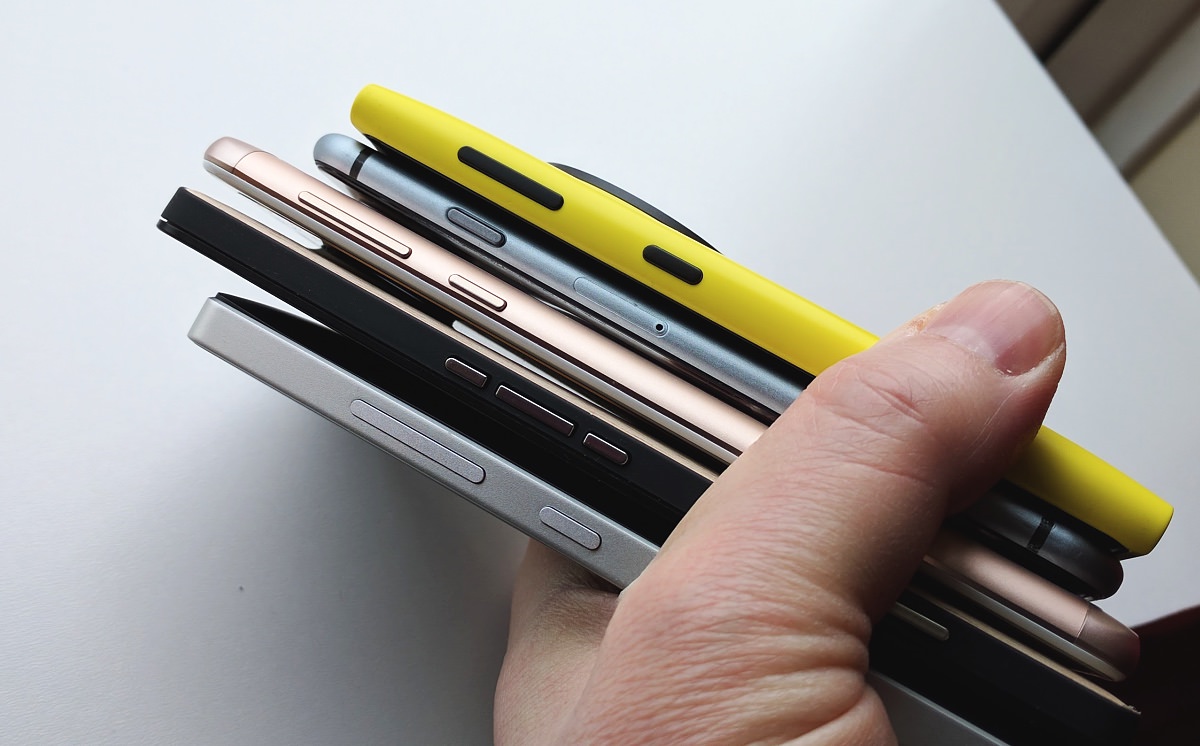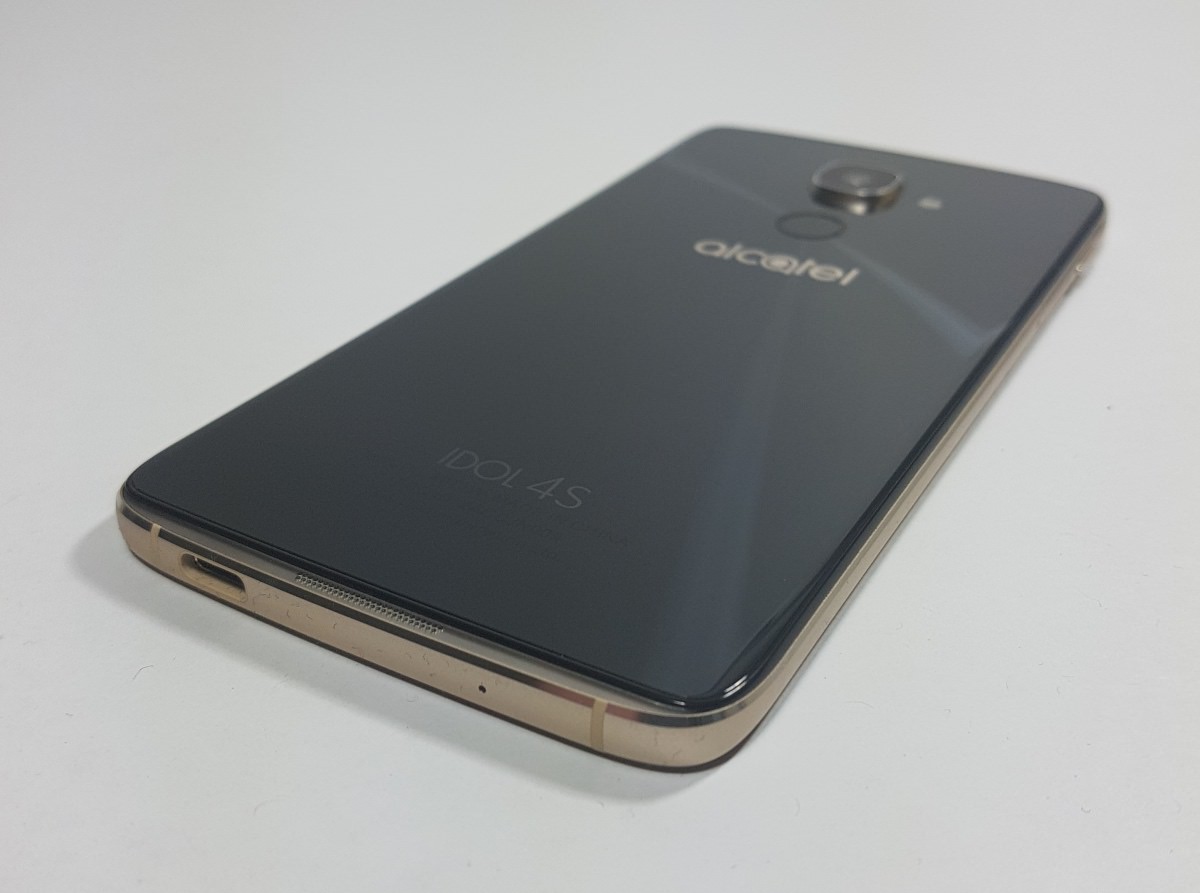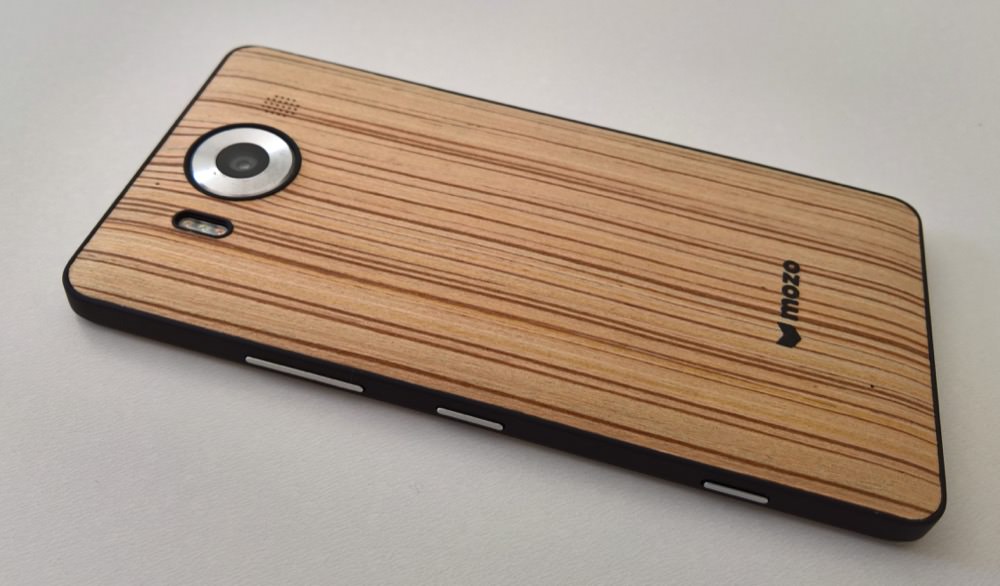
The issue with the modern trend towards ultra-thin metal and glass designs is, obviously, this: the phones are unusable day to day in that form.
Looking at the photo and tallying with my own experiences, we have the Lumia 930, bottom, with really solid metal chassis with slab sides that make it a doddle to grip; the Lumia 950 XL with a plastic and natural materials (in this case, wood) Mozo replacement back, also very easy to grip, with the black side coating here rubberised and the profile thick enough to register securely in the average hand.
Then we start to come unstuck slightly - literally. The Lumia 1020 is the best of the rest, this is the smooth 'pillow' like (Fabula) design that was also used on the Lumia 920 and 1520, most famously, and the Nokia Lumia 800 and N9 before that, all fashioned out of a slab of polycarbonate - durable and with an ergonomic form but slightly slippery in the hand at the same time. I've used these Lumias without cases before, but - equally - I always felt happier using them in some kind of shell or case. (In the Lumia 1020's case (pun intended), this one.)
And then we come to two typical 2016/2017 mass market smartphones, metal bodied with smooth finishes, the iPhone 7 and Honor 6X here, though I could have picked from many other examples. In fact, I also had the Honor 8 in for review and missed a trick in not including it in the photo above - the Honor 8 has oleophobic glass front and back and slips out of the hand, off desks, and so on. In each case, there's simply no way to use any of these phones in daily life without a case - I present as evidence the number of people we've all seen out and about in town centres with cracked iPhones.
So, given that the former devices - slab-sided metal or plastic - are secure in the hand and can be used and enjoyed as-is, while the latter devices - thin, rounded metal or glass and utterly unsecure - can't be used as-is and require ugly and bulky (typically TPU) cases, surely the trend should be clear? Why make thin, slippery designs when you can't use them this way? When you can't appreciate what you've bought because there's a thick layer of plastic in the way?
Yet somehow this common sense doesn't seem to have made it to smartphone designers around the world. Every phone that gets announced has to be thinner and smoother and more rounded than the previous one - and who cares how droppable they are?

Well, I care, for one. And I'm slightly dismayed by the current trend creeping into the Windows Phone and Windows 10 Mobile world, thanks to the new Alacatel IDOL 4S Pro, reviewed here by Anthony Fear for AAWP. This has glass front and back too, though in fairness the sides are just flat enough that Anthony didn't find it too droppable. The much more rounded HP Elite X3 is perhaps a special case (pun intended, again!) because its high density plastic construction and extreme durability rating means that even if you did drop it, you'd probably damage the floor more than the phone(!)
In short, I'm puzzled. I pick up my 950 XL with its default Microsoft thin plastic 'bucket' shell and recognise that it's smooth and not very tactile - but then I detach this and replace it with one of the Mozo replacement backs and it's then super-secure in the hand. I pick up my old Lumia 930 and relish in the cold hard metal yet without sacrificing grip at all. Neither phone needs a traditional TPU plastic case, neither phone needs to be wrapped in something extra, and in both cases I get to appreciate their materials. With most 2017 phone designs across the iOS and Android worlds, the edges are thin and the materials fragile or slippery or (in some cases) both, so in day to day use all you ever feel in your hand is a plastic TPU shell.
Manufacturers love to boast in their promo videos about how many hours was spent milling the metal backs of their phones, polishing them up, and so forth, completely ignoring that anyone who spends over the odds money on buying these gadgets won't see or feel any of this detail. It's patently ridiculous.
Anyway, here's to thicker phones, here's to slab sides (think Lumia 930 and 830), here's to plastic and/or wood (think Lumia 950) rather than glass or metal - materials and designs where a case simply isn't needed.
And our smartphones would be much cheaper to make and much cheaper to buy as a result. A compelling argument? Comments welcome!

